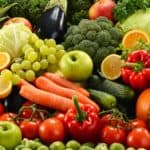By Asli Tuncer Madge, Regulatory Researcher and Regulatory Trends Consultant
Alternative proteins are gaining popularity as some consumers express concerns about the environmental sustainability, animal welfare and health impacts of conventional meat production. Research is examining the evidence for alternative protein sources contributing to a sustainable and diverse food system. Alternative proteins refer to a diverse range of protein sources that serve as alternatives to traditional animal-based proteins like meat, dairy and eggs. These alternative protein sources can come from various cultured (lab-grown) sources, plant-based or insects.
Despite their potential benefits, alternative proteins are still in the early stages of development and some forms are not yet accessible at a price point compared to traditional sources. Additionally, ongoing debates and regulatory challenges need to be addressed to fully realize the category’s potential and ensure responsible development and integration into the food system.
For the latest updates in food and beverage labeling, subscribe to the monthly FoodChain ID report on Food Additives and Labeling.

Cultured Meat Receives Early Regulatory Approval
Lab-grown meat has been legalized in three countries to date, with significant potential for expansion. Singapore was the first nation to authorize the sale of lab-grown meat, followed by the United States. Subsequently, the Netherlands became the first European nation to embrace lab-grown meat.
Europe Debates Cultured and Plant-based Meat
The first noteworthy opposition to cultured meat emerged from Italy. In November, the Italian government prohibited the production and commercialization of cultured meat, as well as the use of meat-related terms for plant-based meat substitutes. The Italian legislation’s opposition was rooted in the belief that lab-grown meat poses a threat to Italian culture and lifestyle. However, despite Italy’s efforts, when the law was submitted to the European Union (EU) for assessment, it faced rejection because of a “violation of notification.” The future of cellular agriculture remains an ongoing debate between EU countries. A note authored by the Austrian, French and Italian delegations and supported by those from the Czech Republic, Cyprus, Greece, Hungary, Luxembourg, Lithuania, Malta, Romania, and Slovakia was discussed in the meeting of EU agriculture ministers on January 23, 2024.
Plant-based Proteins: Consider the Consumer Audience
Groups supportive of alternative protein point to a societal shift towards a more plant-based diet as a significant strategy for reducing the environmental impact of our food system. However, targeting a segment of consumers versus a broad market approach is likely a more realistic strategy. Recent research in the United States with a representative population sample highlighted the strength of positioning the benefit of sustainability. The study concluded that the top label choice among shoppers choosing alternative protein was a combination of “healthy” and “sustainable.”
The Buzz About Insects
Although consumers in some parts of the world might be hesitant based on the source, insects suitable for consumption are being marketed as alternative proteins. Advocates of insect protein cite low production cost, positive nutritional profile and reduced need for land and water compared to livestock production. In early 2023, the European Union authorized the sale of insects, specifically crickets, locusts, and darkling beetle larvae, for human consumption. The market for edible insects in Europe is expected to reach $2.98 billion (£2.3bn) by 2030. Italy has approved the utilization of insect flour for human consumption, albeit with the stipulation that it is not used in traditional dishes such as pasta and pizza.
The Future of Alternative Proteins
Although some governmental steps have been taken to advance alternative protein options, consumers in general remain conservative in their choices. As alternative proteins continue to navigate the complex landscape of consumer preferences, regulatory frameworks and cultural considerations, their transformative potential beckons, shaping the future of sustainable and diverse food systems.










